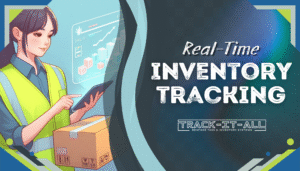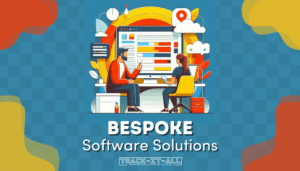If you’re a South African business owner, you know that workforce management is key to success. But managing your employees and their schedules can be time-consuming and complicated. That’s where a workforce management system comes in. With this tool, you can streamline your workforce scheduling, time and attendance tracking, HR management, and workforce planning, all in one place. The benefits are clear: increased efficiency, productivity, and cost savings.
A workforce management system is tailored to your needs and can help you optimize your business. By tracking it all, you can make data-driven decisions and improve overall performance. In this article, we’ll discuss the benefits of a workforce management system, how to choose the right one for your business, and how to implement it effectively.
Key Takeaways
- A workforce management system can help South African businesses optimize efficiency and productivity.
- Key features include streamlined scheduling, time and attendance tracking, HR management, and workforce planning.
- Choosing the right system requires consideration of scalability, flexibility, and customizability.
- Effective implementation involves proper planning and change management.
- Benefits of a workforce management system include enhanced efficiency, improved time and attendance tracking, and leveraging workforce analytics for business insights.
What is a Workforce Management System?
A workforce management system is an all-in-one software solution that enables South African businesses to track, manage, and optimize their workforce. This software streamlines workforce scheduling, time and attendance tracking, HR management, and workforce planning all in one place, allowing business owners to focus on optimizing performance instead of managing administrative tasks. With a workforce management system, you can easily track it all, from employee schedules and time-off requests to overtime hours and compliance with labor regulations. This software provides real-time visibility into your workforce, empowering you to make data-driven decisions and optimize your workforce for maximum efficiency and productivity.Benefits of a Workforce Management System
Implementing a workforce management system could be the key to unlocking your business’s full potential. By optimising your workforce, you can improve efficiency, increase productivity, and reduce labour costs. Here are some of the main benefits:- Improved efficiency: With a workforce management system, you can automate and streamline many processes, from scheduling to time tracking. This saves time and reduces errors, freeing up your team to focus on more important tasks.
- Increased productivity: By optimising your workforce, you can ensure that you always have the right people in the right place at the right time. This means that you can make the most of your resources and maximise productivity.
- Reduced labour costs: A workforce management system can help you to reduce labour costs by eliminating inefficiencies and minimising the need for overtime. You can also use the system to accurately track employee hours and manage leave more efficiently.
- Enhanced employee satisfaction: With a workforce management system, you can create fair and transparent schedules, reduce the need for manual processes, and provide employees with more control over their work-life balance. This can lead to higher employee satisfaction and better retention rates.
- Better compliance: With a workforce management system, you can ensure that you are complying with all labour regulations and requirements. This can help to avoid costly penalties and legal disputes, keeping your business on track.
Choosing the Right Workforce Management System
Investing in a workforce management system is a significant decision for any South African business. Selecting the right system that aligns with your specific needs is crucial. When evaluating different workforce management solutions, consider the following factors to help you make an informed decision:Scalability
Your workforce management system should be able to grow with your business. Ensure that the system can handle an increase in users, data, and locations without compromising performance.Flexibility
Look for a workforce management system that is flexible enough to meet your business needs. It should be adaptable to different industries, job roles, and work environments, including remote work.Integration Capabilities
Your workforce management system should integrate with your existing technologies, including your HR, payroll, and time and attendance systems. This ensures that all data is synced and up-to-date, streamlining administrative processes and reducing errors.Customizability
Workforce management systems should be customizable to fit unique business requirements. Seek a system that can be tailored to your specific processes, workflows, and reporting needs. This will enable you to track it all and gain valuable insights into your workforce. By considering these factors and taking the time to evaluate your options, you can choose a workforce management system that is tailored to your South African business needs.Implementing a Workforce Management System
Implementing a workforce management system in your South African business can seem like a daunting task, but proper planning and execution are key to ensuring a smooth transition. Here are the steps you should take:- Identify your goals: Clearly define what you want to achieve with your new workforce management system. This will guide your decision-making process and ensure that you choose a system that aligns with your specific business needs.
- Select a provider: Do your research and choose a reputable provider that offers a workforce management system tailored to your needs. Look for a provider that offers a range of features and functionalities, including real-time tracking, automated scheduling, and compliance management.
- Migrate your data: Before you implement your new system, you’ll need to transfer your employee data from your old system. This can be a time-consuming process, so plan accordingly.
- Configure your system: Once your data is migrated, work with your provider to configure your new system to meet your specific requirements. This includes setting up workflows, customizing reports, and integrating with other systems.
- Train your team: It’s essential to train your team on how to use the new system. This includes administrators, managers, and employees. Make sure everyone understands how to use the system and its key features, such as scheduling and time tracking.
- Monitor and evaluate: After your system is up and running, monitor its performance and evaluate its impact on your business. Make adjustments as needed to optimize its effectiveness and ensure that you’re getting the most out of your investment.
Enhancing Workforce Efficiency with a Workforce Management System
If you want to optimize your business operations, a workforce management system can help. With workforce scheduling software and employee scheduling software, you can automate scheduling processes, optimize shift planning, minimize labor gaps, and improve overall workforce productivity. One of the key benefits of a workforce management system is accurate forecasting and real-time visibility into workforce availability. You can track it all – from employee schedules to shift changes to time off requests – ensuring that you have the right people in the right place at the right time. This can help you minimize overtime costs, reduce absenteeism, and improve service levels. By automating scheduling tasks, you can also free up time for managers to focus on more strategic activities, such as workforce planning and talent development. With workforce planning software, you can align workforce capacity with demand and optimize resource allocation. This can lead to better business outcomes and improved employee satisfaction.Streamlining Workforce Management
With a workforce management system, you can streamline HR management processes, automate time and attendance tracking, and leverage workforce analytics for business insights. This can help you achieve workforce optimization, minimize labor costs, and maintain compliance with labor regulations. Workforce scheduling software and employee scheduling software can also help you reduce administrative burden and improve accuracy. By replacing manual methods with a time and attendance system, you can eliminate errors and ensure accurate recording of employee hours. This can provide real-time data, automated reporting, and compliance with labor regulations, helping you stay on track and avoid penalties. Overall, a workforce management system can help you optimize your workforce and drive success. By tailoring the system to your business needs, you can achieve better efficiency, productivity, and compliance. So why not invest in a system today and start reaping the benefits for your South African business?Improving Time and Attendance Tracking
One of the key benefits of a workforce management system for South African businesses is its ability to improve time and attendance tracking. With manual methods, it can be difficult to ensure accurate recording of employee hours, which can lead to errors and compliance issues. However, with a modern workforce management system, you can track it all. By leveraging a time and attendance system, businesses can replace manual methods with automated tracking, eliminating errors and ensuring accuracy. This real-time data can then be used to generate automated reports and provide insights into labor productivity and costs. Additionally, a workforce management system can help businesses stay compliant with labor regulations. The system’s built-in compliance features can alert management to potential issues and provide documentation to support audits.Leveraging Workforce Analytics for Business Insights
With a workforce management system, you have the power to track it all. Every aspect of your workforce can be monitored and analyzed to provide valuable business insights. Leveraging workforce analytics will enable you to make data-driven decisions, optimize your workforce, and plan strategically for the future. One key benefit of workforce analytics is the ability to analyze key metrics. By tracking employee data such as attendance, productivity, and performance, you can identify trends and patterns that can inform decision-making. Real-time data allows you to make proactive adjustments to improve business performance. Another advantage of workforce analytics is the ability to achieve workforce optimization. With accurate forecasting and improved labor scheduling, you can align workforce capacity with demand, minimize labor costs, and optimize resource allocation. That means you can ensure your business is staffed appropriately, reducing labor gaps and enhancing productivity.- Track attendance, productivity, and performance data to identify trends and patterns
- Make data-driven decisions and proactive adjustments to improve business performance
- Achieve workforce optimization through accurate forecasting and improved labor scheduling
Streamlining HR Management Processes
If you’re looking to streamline your HR management processes, a workforce management system is the solution you need. With its ability to store all your employee data in one central location, it simplifies HR processes such as onboarding, performance management, and employee development. You can use a workforce management system to automate leave requests, eliminating the need for manual paperwork. Managers can approve time off with a few clicks, saving time and reducing errors. Track all your employee data with ease and view historical information that can help with employee development plans. HR teams can manage employee performance by setting goals and objectives and tracking progress against them. Real-time reporting and analytics help to identify areas of improvement and provide actionable insights for your business. With a workforce management system, you can maintain compliance with local labor laws and regulations. Whether it’s tracking overtime hours, managing terminations, or ensuring that all employee records are up to date, you can track it all.Achieving Workforce Optimization
When it comes to managing your workforce, optimizing performance is key. A workforce management system can help you achieve this by aligning your workforce capacity with demand, minimizing labour costs, and optimizing resource allocation. With accurate forecasting and improved labour scheduling, you can ensure that you have the right people in the right place at the right time. This reduces labour gaps and eliminates overstaffing, which can lead to unnecessary costs and decreased productivity. A workforce management system not only helps with scheduling and planning, but also provides real-time visibility into workforce availability. This allows you to make quick and informed decisions, ensuring that your business is always running at its most efficient level. Track it all with a labour management system that provides insights into key metrics, enabling you to identify trends and make proactive adjustments to improve business performance. With a workforce management system, achieving workforce optimization has never been easier.Tailoring a Workforce Management System to Your Business Needs
Investing in a workforce management system can provide significant benefits for your South African business, but to truly optimize its capabilities, it needs to be tailored to your specific needs. When choosing a workforce management system, look for one that offers customization options, such as configuring workflows, reports, and integrations. This will allow you to align the system with your unique business processes and requirements. Make sure to identify your business’ specific pain points and goals, and communicate them to the workforce management system provider. This will help ensure that the system is configured to address your needs and produce the desired outcomes. Furthermore, ensure that the system is scalable and can adapt to your business’ changing needs and growth. A system that is too rigid or inflexible may not be able to accommodate your future needs, resulting in additional costs and resource investments. Track it all with a tailored workforce management system that caters to your business needs, and enjoy the benefits of a more efficient and productive workforce.Conclusion
Implementing a workforce management system tailored to your business needs can optimize efficiency, increase productivity, and reduce labor costs. By automating scheduling and time tracking processes, streamlining HR management, and leveraging workforce analytics, you can achieve workforce optimization and drive business success. Don’t forget to track it all with a reliable workforce management system, allowing you to make data-driven decisions and identify areas for improvement. Take action today and invest in a system that will help you achieve your business goals and stay ahead of the competition.Are Employee Tracking Systems and Workforce Management Systems the Same Thing?
Employee tracking systems and workforce management systems may appear to be similar, but they serve distinct purposes. While both contribute to optimizing employee productivity through tracking, employee tracking systems primarily focus on monitoring individual performance and activities. On the other hand, workforce management systems encompass a broader spectrum, covering tasks like scheduling, leave management, and performance evaluation for overall team efficiency. It’s important to understand these differences to implement the most suitable solution for your organization.







